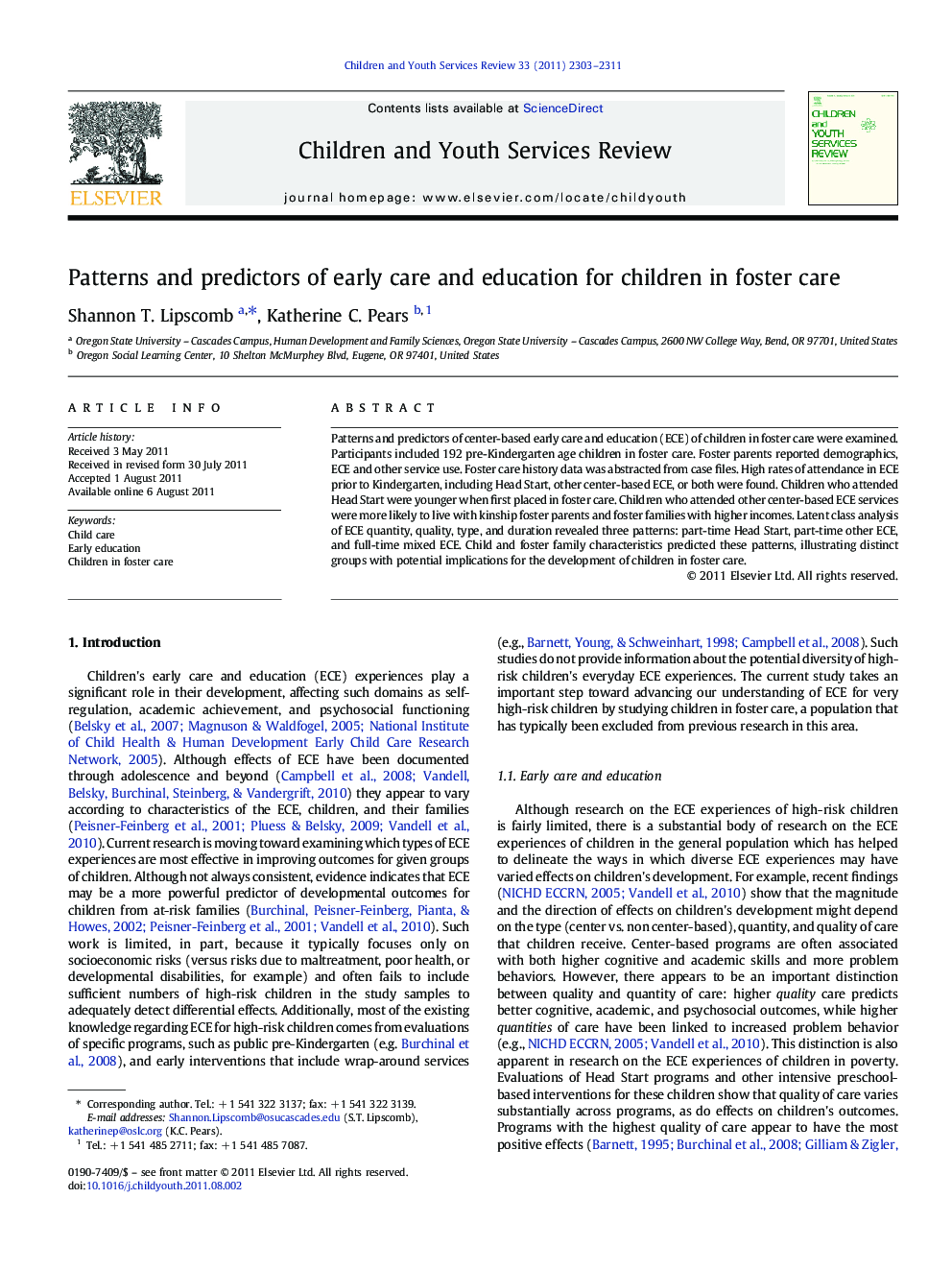| Article ID | Journal | Published Year | Pages | File Type |
|---|---|---|---|---|
| 346233 | Children and Youth Services Review | 2011 | 9 Pages |
Patterns and predictors of center-based early care and education (ECE) of children in foster care were examined. Participants included 192 pre-Kindergarten age children in foster care. Foster parents reported demographics, ECE and other service use. Foster care history data was abstracted from case files. High rates of attendance in ECE prior to Kindergarten, including Head Start, other center-based ECE, or both were found. Children who attended Head Start were younger when first placed in foster care. Children who attended other center-based ECE services were more likely to live with kinship foster parents and foster families with higher incomes. Latent class analysis of ECE quantity, quality, type, and duration revealed three patterns: part-time Head Start, part-time other ECE, and full-time mixed ECE. Child and foster family characteristics predicted these patterns, illustrating distinct groups with potential implications for the development of children in foster care.
► Children in foster care attended center-based ECE at high rates. ► Children who attended Head Start were younger when first placed in foster care. ► Children who attended other ECE were more likely to be in kinship foster care. ► Latent class analysis revealed three qualitatively different patterns of ECE use. ► Child and foster family characteristics predicted patterns of ECE use.
